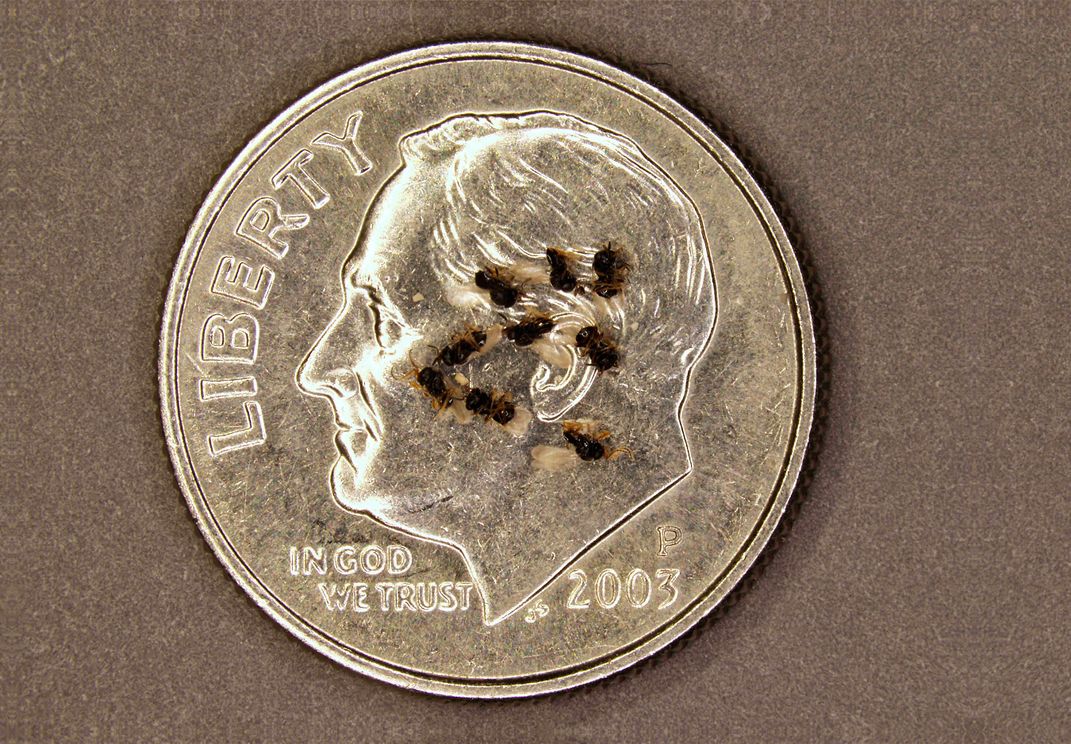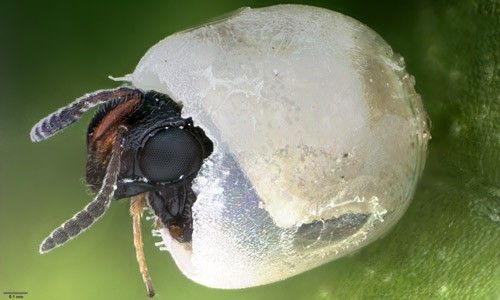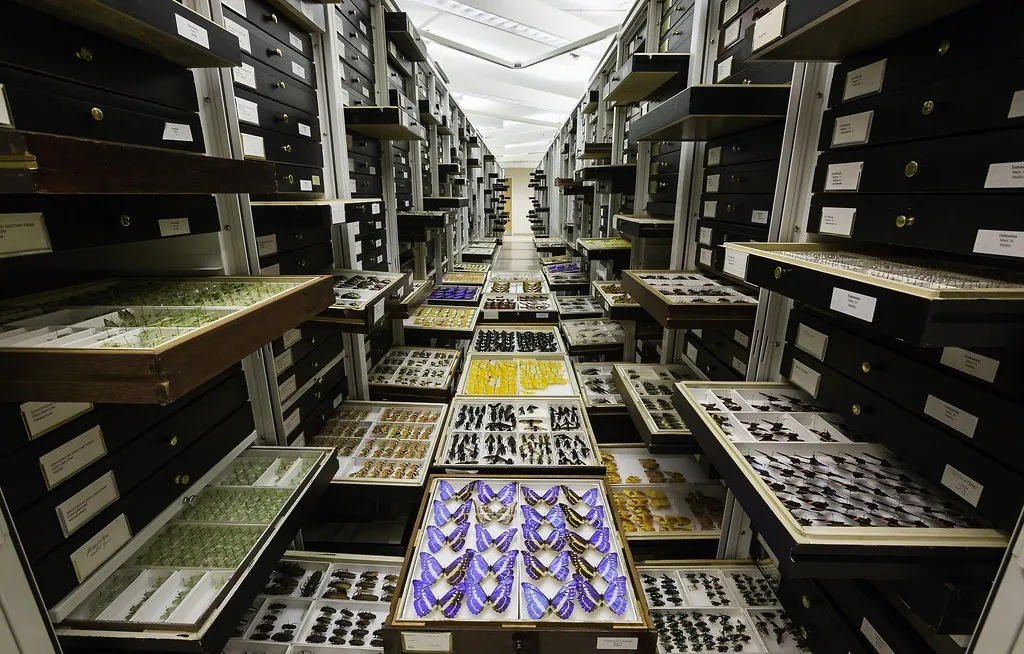NATIONAL MUSEUM OF NATURAL HISTORY
How Tiny Wasps Became Agricultural Defenders
Scientists are studying how different species of wasps can be used for insect biocontrol in the United States.
/https://tf-cmsv2-smithsonianmag-media.s3.amazonaws.com/blogging/featured/A_dead_black_wasp_on_a_gray_background..jpg)
Whether plant or animal, invasive species can threaten native habitats, upset thriving ecosystems and imperil food crops. But the chemicals that kill these unwelcome visitors often cause as much damage as the visitors themselves. That’s why scientists use a technique called biological control to combat the spread of invasive species.
“The core of successful biological control is that we’re exploiting something that already occurs in nature,” said Dr. Matt Buffington, a research entomologist at the United States Department of Agriculture’s Agricultural Research Service (ARS) Systematic Entomology Laboratory.
The process uses natural enemies of an invasive species to keep an invasion in check. For entomologists like Buffington, biological control — or biocontrol — often involves a unique weapon: microscopic parasitoid wasps.
Today, scientists at the USDA are studying how different species of these tiny wasps can be used for insect biocontrol in the United States. By combining fieldwork with information from countless specimens in the National Insect Collection at the Smithsonian National Museum of Natural History, researchers can learn more about how biocontrol works in the bug world.
How biocontrol took flight

Classic insect biocontrol has been used for thousands of years but focusing on microscopic parasitoid wasps are a 20th century phenomenon.
“The modern process of classical biocontrol, in a nutshell, is you explore, you bring over the wasps, you quarantine them and test how they behave in a new environment and then you develop a protocol so you can rear 10,000s of them for release,” said Dr. Mike Gates, research leader and entomologist at the USDA’s ARS Systematic Entomology Laboratory.
Entomologists prefer parasitoid wasps as biocontrol agents because of the specialized relationships the wasp form with their target host species. In general, each parasitoid wasp species evolves to attack a single host species. The parasitoid-host relationship is a crucial part of biocontrol, because a wasp that specializes in one species usually won't attack other native species.
“When you need a surgical means of addressing a pest insect problem, parasitoid wasps are the reigning champs,” said Buffington. Parasitoids are also useful because, unlike parasites who need to keep their host alive to survive, parasitoids must kill their hosts to complete their life cycle.
But before scientists can even begin to study if a parasitoid wasp is the perfect biocontrol agent for an invasive insect, they have to know what they’re looking at. Often, that research begins at the National Insect Collection.
A buzz-are finding
Before parasitoid wasps can be used for biocontrol, the wasps are identified, isolated and extensively studied. This is what Buffington and his coworkers did in 2013 when they were searching for a perfect wasp to stop the spread of the pesky brown marmorated stink bug.
This stink bug, which plagues the Eastern United States, came from Asia, so that’s where the scientists started looking for biocontrol agents. Their fieldwork yielded a species that appeared to be one that was recently discovered in China. Just to be sure, the team decided to check the National Museum of Natural History’s National Insect Collection to see if any specimens of the wasp had been collected before. They found that this supposedly new species had actually been discovered before, with a different name, and added to the collection roughly 110 years ago.
The samurai wasp, Trissolcus japonicus, seemed to have a very specialized relationship with the brown marmorated stink bug, laying its own eggs inside the stink bug’s eggs, and ultimately chewing its way out of the host eggshell. It seemed like the best possible match.

But before the samurai wasp could be released to combat the invasive stink bug, Buffington needed to be sure it wouldn’t hurt other species. He and his colleagues began quarantined laboratory studies, rearing thousands of the wasps to see if they consistently only attacked stink bugs.
Then, one day, the samurai wasp was discovered outside of the quarantined laboratory. But the wasp had not escaped. It had crossed the ocean by itself in an instance of fortuitous biocontrol.
“Fortuitous biocontrol is when the parasitoid comes along into the country with the invasive insect,” said Gates. For example, the wasp’s larvae may have been living in some of the stink bug eggs that arrived on cargo into the United States.
Without samurai wasp specimens in the museum’s collections, USDA scientists might not have known that the parasitoid wasp had come directly from China. They could have thought it was a local parasitoid that had seized the opportunity to specialize in a new kind of bug.
“You need to be able to refer back to original specimens and determine if you’re dealing with the same thing or a new thing. If you don’t have specimens, like those at the National Insect Collection, it doesn't work out well,” said Buffington.
A hive of activity for science and collections

Although Buffington and Gates belong to the USDA’s Systematic Entomology Laboratory, they care for and maintain the National Insect Collection at the National Museum of Natural History as part of a collaboration that began back in 1881.
Every day, they work with museum staff, managing over 35 million pinned and cryogenically frozen specimens acquired from all over the world. Some of those collections are extremely valuable for insect biocontrol and invasive species.
“As curators and biocontrol researchers, we take care of these specimens because they’re priceless,” said Buffington. “They hold so much data.”
Related Stories:
Family Members Follow Original Asian Giant Hornet to Smithsonian
Get to Know the Scientist in Charge of Smithsonian’s 1.9 Million Mosquitoes
Why Hawk Moths are the Underdogs of the Pollinator World
Notorious Asian Giant Hornet Finds Home in Smithsonian

